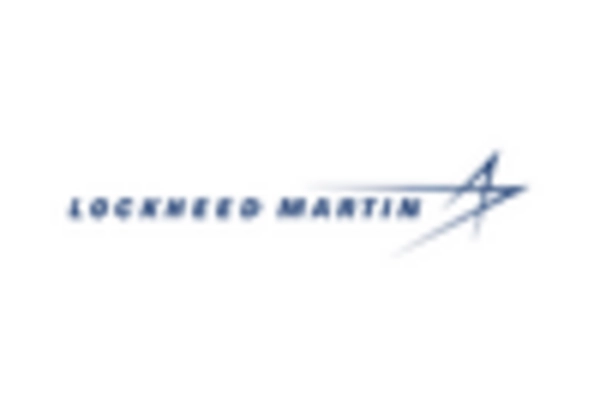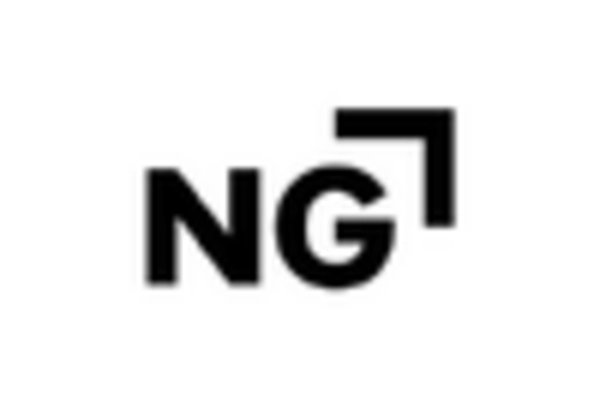Increasing Defense Budgets
The United States Anti Aircraft Warfare Market is experiencing a notable surge in defense budgets, driven by geopolitical tensions and the need for enhanced national security. In recent years, the U.S. government has allocated substantial funds to modernize its military capabilities, including anti-aircraft systems. For instance, the fiscal year 2025 budget proposal indicates a significant increase in funding for missile defense programs, which directly impacts the anti-aircraft sector. This financial commitment suggests a robust growth trajectory for the industry, as manufacturers are likely to invest in research and development to meet the evolving demands of the armed forces. Consequently, the increasing defense budgets are expected to bolster the United States Anti Aircraft Warfare Market, fostering innovation and the introduction of advanced technologies.
Integration of Advanced Technologies
The integration of advanced technologies is reshaping the landscape of the United States Anti Aircraft Warfare Market. Innovations such as artificial intelligence, machine learning, and advanced radar systems are being incorporated into anti-aircraft systems to enhance their effectiveness. For example, AI-driven algorithms can improve target recognition and engagement efficiency, thereby increasing the overall operational capabilities of defense systems. The market is witnessing a trend towards the development of multi-layered defense systems that leverage these technologies to provide comprehensive protection against various aerial threats. As a result, the integration of advanced technologies is expected to propel the growth of the United States Anti Aircraft Warfare Market, enabling military forces to maintain superiority in the face of evolving challenges.
Focus on Cybersecurity in Defense Systems
The increasing reliance on digital technologies in military operations has heightened the focus on cybersecurity within the United States Anti Aircraft Warfare Market. As anti-aircraft systems become more interconnected and reliant on software, the potential for cyber threats has escalated. The U.S. Department of Defense is prioritizing the development of secure systems to protect against cyber intrusions that could compromise air defense capabilities. Investments in cybersecurity measures are expected to grow, as the military seeks to safeguard its anti-aircraft systems from potential vulnerabilities. This focus on cybersecurity not only enhances the resilience of defense systems but also drives innovation within the United States Anti Aircraft Warfare Market, as companies strive to create robust solutions that can withstand cyber threats.
International Collaboration and Partnerships
International collaboration and partnerships are becoming increasingly vital within the United States Anti Aircraft Warfare Market. As threats become more complex and transnational, the need for cooperative defense strategies has emerged. The U.S. is actively engaging with allied nations to enhance interoperability and share technological advancements in anti-aircraft systems. Joint exercises and collaborative research initiatives are fostering a more integrated approach to air defense. This trend not only strengthens alliances but also stimulates innovation within the industry, as companies work together to develop cutting-edge solutions. The emphasis on international collaboration is likely to drive growth in the United States Anti Aircraft Warfare Market, as shared resources and expertise lead to more effective defense capabilities.
Emerging Threats from Unmanned Aerial Vehicles
The proliferation of unmanned aerial vehicles (UAVs) poses a unique challenge to the United States Anti Aircraft Warfare Market. As adversaries increasingly deploy drones for surveillance and combat operations, the demand for effective countermeasures has intensified. The U.S. military recognizes the necessity of developing advanced anti-aircraft systems capable of neutralizing UAV threats. Reports indicate that the market for counter-drone technologies is projected to grow significantly, with investments aimed at enhancing detection, tracking, and engagement capabilities. This shift in focus towards addressing UAV threats is likely to drive innovation within the United States Anti Aircraft Warfare Market, as companies strive to create solutions that can effectively counteract these emerging aerial threats.

















Leave a Comment